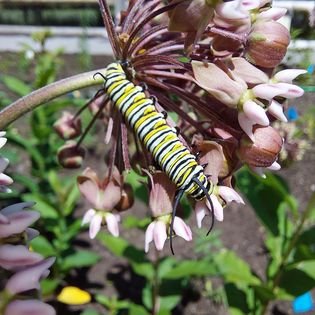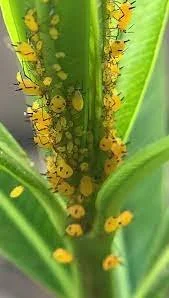Spotlight on Milkweed (Asclepias spp.)
When people think about milkweed, they often associate it with Monarch butterflies. That is because it is the host plant for Monarch caterpillars so it is critical to their survival. The caterpillars sequester a toxin from the milkweed to help protect them from predators. Their bright coloration is a warning to predators.
Monarch caterpillar on common milkweed.
Monarchs are now considered to be endangered and planting native milkweed, which is host plant for the caterpillars, is one way to help!
Red Milkweed Beetle, photo credit: Kristian Demary
However, many other species also use milkweed.
Adult red milkweed beetles (shown on the right) feed on milkweed and sequester toxins from the plant. Their bright red and black coloring is a warning coloration that they are chemically defended. Female red milkweed beetles lay her eggs at the base of the stem of milkweed.
Oleander Aphid (Family Aphididae)
They injest sap from the phloem from the milkweed. If there is a large enough population on a single plant, they can stunt the growth of the plant.
The adult aphids are all female! That means the offspring are all clones of the femlae.




